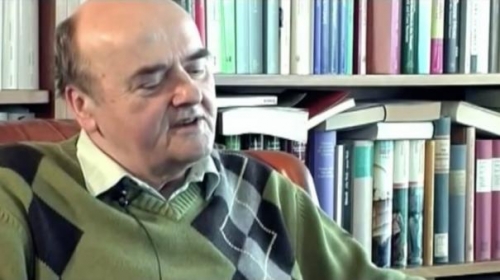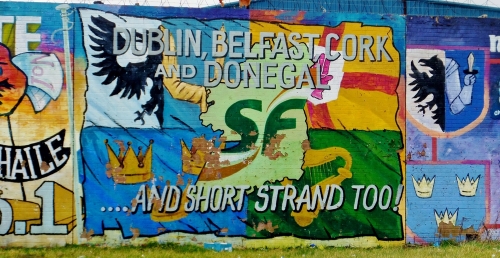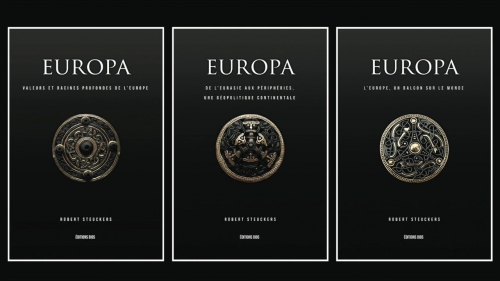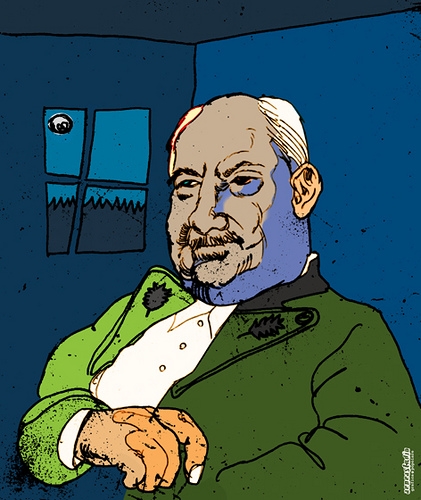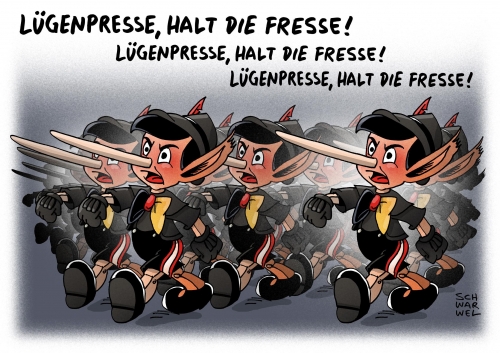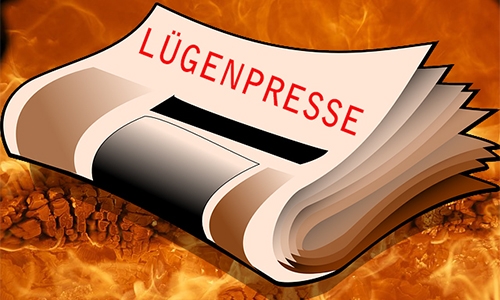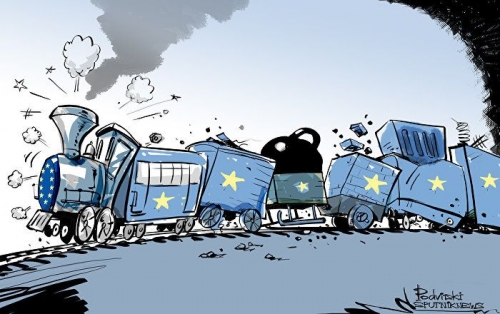
La mode : les manipulations physiques de la subversion mondiale
par Pierre-Emile Blairon
Nous avons plusieurs corps
Les traditions indoues distinguent chez l’individu cinq types de corps subtils, par ordre ascendant de l’immatérialité : le corps physique, puis éthérique, astral, causal, et mental.
La Tradition primordiale, qui inclut les traditions indoues et toutes les autres, admet comme seule hiérarchie celle qui va du haut vers le bas, donc du supérieur à l’inférieur, de la Tradition aux traditions, du spirituel au matériel, de l’intérieur à l’extérieur, du naturel à l’artificiel, du fondamental au superficiel, de l’être au paraître, principe que nous avons signifié symboliquement par la roue[1] où le moyeu immobile, au point le plus central et le plus intérieur, représente le fondement immuable, intangible, permanent, celui qui ne tourne pas, et, au bout des rayons qui convergent vers ce centre, en contact direct avec le sol et la matérialité, le cercle de fer ou de bois, le point le plus extérieur.
Comme tout est analogique, le corps humain procède du même principe. Le plus vulnérable, soumis à toutes les agressions, est sa surface, sa peau, tout comme l’écorce de la Terre est la partie la plus fragile de son entité.
Cette hiérarchie s’applique avec toute sa force au début d’un cycle civilisationnel (ce que les Grecs appelaient l’Age d’or) mais, les civilisations étant aussi mortelles que tout ce qui vit, le déclin advient lentement, amenuise leurs défenses immunitaires et les rend plus vulnérables, les sciences sacrées cèdent la place aux profanes, les exigeants fondements spirituels sont grignotés par les besoins matériels créées artificiellement.
Des fonctions qui ne sont plus vitales
Les fonctions qui étaient vitales et nécessaires autrefois : se nourrir, se protéger des variations climatiques (les vêtements) et des agressions (la maison) n’ont cessé de grossir artificiellement – le règne de la quantité, qui est aussi celui de l’argent - (prolifération des obèses, accroissement de l’offre vestimentaire, envolée des prix du logement) alors mêmes qu’elles sont devenues superflues puisqu’abondantes dans nos sociétés occidentalisées. D’autres fonctions sont apparues, communication, déplacements, loisirs… qui ne sont ni vitales ni nécessaires mais tout aussi superflues et pléthoriques.
A la fin du dernier Age, l’Age de fer, celui dont nous vivons les derniers instants, les valeurs positives de bon sens, de respect et de rectitude qui maintenaient l’équilibre de la société et réglaient sa bonne marche sont désavouées, ignorées, méprisés et périclitent sous les coups de boutoir des populations fanatisées ou décérébrées par les gourous du désordre mondial et du chaos qui prêchent l’uniformité, la confusion, la facilité, l’hédonisme, l’égalitarisme et l’anarchie. Toutes les fins de cycle civilisationnelles voient l’apparition de non-valeurs qui sont l’inversion systématique de celles qui constituaient la colonne vertébrale des dites civilisations.
Le corps vestimentaire
A la liste des cinq types de corps subtils, nous ajouterons un corps de plus, dans le sens de la matérialité : le corps vestimentaire, qui constitue comme une seconde peau de l’Homme.
Sans remonter aux débuts de notre cycle (ni même à celui de notre dernier Age, le Kali-Yuga, qui a commencé son processus involutif 4500 ans avant notre ère), en s’en tenant aux temps historiques bien plus récents, on sait que le vêtement était très codifié, en accord avec le type de culture que s’était donnée la communauté de sang et de sol qui l’avait adopté ; parmi les exemples les plus intéressants, celui des clans écossais qui portaient des tartans (kilts) dont les couleurs étaient tirées de plantes qui poussaient sur le sol qu’ils occupaient. Cette coutume est très ancienne puisqu’on a retrouvé des momies tokhariennes dans le désert du Tarim en Chine, qui vivaient 3500 ans avant notre ère ; ces momies portant des tartans sont supposées être indo-européennes, voire ancêtres des Celtes.
Le vêtement, à l’origine marque d’une tribu, d’une communauté, d’un clan, d’une fonction, s’est ensuite individualisé chez presque tous les peuples du monde, pour s’uniformiser en même temps que progressait l’emprise du mondialisme initié par la sous-culture américaine destructrice des cultures natives. L’Homme est passé, sans se révéler entièrement en tant qu’être humain, du statut naturel à celui de la machine et même de « produit ».
Le vêtement : voile ou dévoilement de l’être intérieur ?
En Europe, les familles royales qui voulaient s’accaparer le plus de territoire possible ont pratiqué une centralisation effrénée et ont exigé de leurs vassaux l’abandon des langues, coutumes et vêtements régionaux bien vite méprisés. La « mode » en pratique dans les cours royales, commune à toute l’Europe, est née mais le rapport avec les fondamentaux traditionnels a subsisté sous d’autres formes et l’élégance qui a remplacé la tradition est l’une des formes de cet héritage ancien.
Quelques princesses ont été remarquées et admirées dans ces cours, non seulement pour leur beauté, mais aussi pour leur maintien, leur port de tête. Certains hommes, princes et officiers, se distinguaient par leur stature, une élégance désinvolte et une prestance qui les supposaient aussi à l’aise à cheval sur un champ de bataille que sous les lustres des salons royaux.
Les cas extrêmement rares où la beauté extérieure reflète parfaitement la beauté intérieure sont une résurgence miraculeuse des temps anciens où cette adéquation était la règle ; où le paraître était l’expression de l’être ; la cohésion de la personne était assurée par la cohérence de ses divers composants ; c’était de vrais aristocrates, qui n’avaient pas besoin de prouver leurs quartiers de noblesse qui trouvaient leurs sources dans les traditions enfouies.
Chez les Européens de l’Ouest, certains peuples ont conservé cet héritage à travers leurs traditions, comme en témoignent encore de nos jours les Arlésiennes ou les Bavarois. Les Françaises, d’une manière générale, ont su longtemps imposer leur distinction naturelle et leur grâce au monde jusqu’à une période très récente ; ce fut ensuite la dégringolade et la disparition quasi-totale de tout ce qui pouvait se rapporter à cette intelligence du goût et de la beauté.
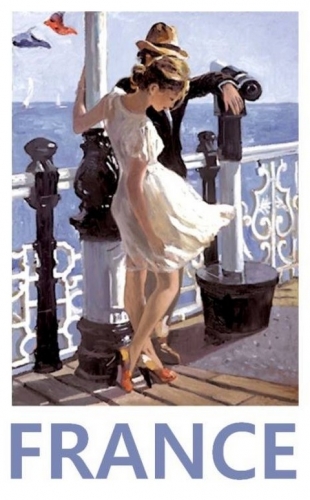
La dictature de l’informe
On peut facilement situer ce basculement qui a vu disparaître toute trace de raffinement en France après les manifestations des « révoltés » de mai 68, petits-bourgeois, enfants de grands bourgeois, ceux-là même qui sont maintenant au pouvoir.
La forme a alors disparu au profit de l’informe et la prestance au profit de l’inconsistance. Le vêtement reflétait bien la décomposition des caractères et des corps.
Les pseudo-rebelles de 68 se sont insurgés contre les uniformes (surtout militaires)… pour en adopter d’autres ; après le passage de ces gauchistes qui prétendaient s’affranchir de la pesanteur américaine sur la culture mondiale, on a vu déferler en France et en Europe le « style » américain : baskets, jeans, tee-shirts, casquettes ; les petits écoliers français et européens ont été sommés d’adopter cet uniforme sous peine d’être exclus des cours de récréation.
Les enfants du nouveau système, lentement dépossédés de toute éducation, d’exemple, de repères et, plus encore, d’héritage culturel, se glissèrent avec joie sous le rouleau compresseur de Big Brother ; le mimétisme et le paraître devinrent pour eux les seules attitudes gratifiantes, l’argent, qui leur permettait d’acheter les gadgets à la mode, la seule valeur susceptible d’éveiller chez eux un soupçon d’intérêt.
Des trous à l’âme
Le débraillé vestimentaire, l’absence de recherche esthétique, a ensuite franchi un nouveau pas au début du XXIe siècle avec la mode des jeans troués qui nous fait penser aux « trous » du corps astral, lorsque l’individu est en état d’agression ou de faiblesse, et nous pensons aussi aux trous de la couche d’ozone, agression opérée par l’être humain sur la nature.
Pendant ce temps, les couturiers invertis – il fallait bien ceux-là dans une société en inversion complète des valeurs - qui donnent le ton de ce qu’on appelle la « mode » dans les salons parisiens, anglais, italiens ou américains ne visent qu’à ridiculiser les femmes et efféminer les hommes. Il suffit de voir les vidéos des défilés conçus par ces « génies » de la « haute » couture pour réaliser à quel niveau de perversité le citoyen est tenu d’adhérer[2]. Le « show » que nous avait offert le Président de la République sur le perron de l’Elysée le 21 juin 2018 procède de la même démarche « esthétique ».
C’est vrai qu’il n’y a là qu’un très lointain rapport avec cette mode populaire somme toute banale, et presque innocente, des jeans troués. Encore faut-il bien comprendre ce que cette démarche qui consiste à acheter un jeans usagé (quelquefois beaucoup plus cher qu’un neuf) dans une boutique représente d’absurde et de pathologique.

Une ethnospiritualité de l’enveloppe
Mais il y a plus grave. Le jeans troué est le symptôme de l’attaque de forces négatives sur le processus même de la vie, le processus vital. Le vêtement, symboliquement, est une protection (sans doute illusoire concrètement) contre les agressions extérieures. Le triomphe de la matière advient quand elle commence à grignoter ce qui n’est plus de son domaine. Sous son action, le corps vestimentaire se délite, devient poreux, le chemin vers le centre intérieur s’insinue par les brèches ouvertes. L’usure de l’enveloppe, qui était naturelle et l’œuvre du temps, est devenue artificielle et l’œuvre de puissances malsaines.
Mais les forces de la subversion mondiale ne s’en sont pas tenues là ; l’objectif, leur semble-t-il, est à leur portée.
Sous le corps vestimentaire commence le corps physique qui, tout physique qu’il est, n’en fait pas moins partie des cinq corps subtils de la Tradition. La peau est son enveloppe extérieure. Première ou ultime protection selon qu’on l’envisage de l’extérieur ou de l’intérieur. Notre corps recèle en effet d’autres système de protection, contre les multiples agressions, extérieures ou intérieures (les maladies). Mais la peau constitue aussi l’interface entre l’intérieur et l’extérieur, entre la matière et le spirituel. Et elle donne aussi à connaître au monde le mode de vie et le sol que le divin, qui n’aime pas l’uniformité, a choisi pour matérialiser l’âme que transporte ce corps sur notre Terre : notamment sa couleur.
Les forces anti-traditionnelles s’efforcent de nier cette évidence par tout un système de propagande que nous connaissons bien. Ceci reste du domaine de l’idéologie mais ces forces négatives s’attaquent désormais concrètement, matériellement, à cette protection naturelle et à cette forme d’identité qu’est la peau par le biais, encore une fois, de la mode.
Il faut sauver sa peau !
Toutes les formes d’agression sont utilisées pour décomposer et meurtrir cette enveloppe. La contre-tradition, comme son nom l’indique déjà, est une imposture qui s’efforce de reprendre maladroitement les codes présumés et incompris de la Tradition qui seraient restés vaguement ancrés dans les esprits, comme une mémoire collective. C’est ainsi que prolifèrent sur les visages des jeunes gens (mais aussi des plus âgés, mais aussi ailleurs que sur les visages) toutes sortes d’anneaux ou de bijoux accrochés, insérés, à toutes les parties symboliques du corps comme il était souvent coutume chez les peuples dits primitifs (lesquels sont en réalité des peuples tardifs découlant d’un processus dégénératif, mais ceci est une autre histoire[3]). De même que les scarifications en pratique chez ces peuples lors de rites initiatiques sont reprises sous forme de tatouages indiscrets et pléthoriques qui font ressembler de frêles jeunes filles européennes à de vigoureux camionneurs ou à des membres de la secte japonaise des Yakuzas.
La subversion mondiale, qui croit avoir déjà gagné, n’a qu’un but : atteindre le centre de la Tradition pour le détruire et empêcher le retour à un nouveau cycle. Le corps humain est la représentation analogique du corps de la Tradition et la plus vulnérable. Il convient que chacun résiste à cette intrusion.

Face à ces agressions, que doivent faire les hommes différenciés ?
Les hommes différenciés sont, selon l’expression employée par Julius Evola, cette infime minorité de personnes lucides et responsables, celle-là même qui est investie d’une mission propre à faire repartir la roue du temps pour un nouveau cycle.
Selon Guénon, les individus n’ayant pas su conserver dans leurs différents êtres une cohérence et une consistance seront irrémédiablement condamnés à disparaître, à se « volatiliser » lorsqu’adviendra, inévitablement, la catastrophe finale ; seule, une minorité, dotée encore de la conscience des valeurs traditionnelles primordiales, un souvenir de l’Age d’Or, ayant conservé les repères naturels, biologiques, spirituels, culturels, intellectuels, émotifs, de la Tradition, sera sauvegardée afin d’accomplir sa mission de transition, cette mission consistant à semer les germes du nouveau cycle.
L’on n’est pas toujours maître de son apparence physique mais on est presque toujours responsable de l’aspect de son corps vestimentaire et, plus intimement, de son enveloppe corporelle.
Il convient donc pour ces personnes appartenant à cette minorité de ressembler à ce qu’elles sont, ou à ce qu’elles essayent d’être sans qu’il y ait, entre les différents corps, de visible différence. Le principe étant celui de l’équilibre et du bon sens. Il est indispensable de recentrer ses différents corps pour les besoins de sa cohérence psychologique et de sa cohésion physique. La tradition exige de disposer d’une colonne vertébrale solide et de présenter une forme définie dans toutes les circonstances de la vie. Il appartient à chacun, à la fois dans sa démarche spirituelle et dans son comportement extérieur, d’être à la hauteur de ce qu’il est ou de ce qu’il prétend être, dans son désir d’être perfectible.
La vie est faite de signes perceptibles et apparents ; mais les symbolistes savent qu’un monde parallèle existe qui est fait de signes imperceptibles et apparents seulement à certains, et que ces signes sont aussi nombreux, aussi clairs et aussi évidents que ceux du monde directement perceptible. Le paraître est une composante essentielle de la vie ; il n’est superficiel, inconsistant, que si on l’est soi-même profondément. Le paraître est le miroir de ce que nous sommes au regard des autres ; il n’est l’œuvre que de notre intelligence, de notre sensibilité et de notre volonté ; il est un aspect de l’exercice de notre responsabilité, de notre libre-arbitre, il reflète, dans la forme, le respect que nous avons de nous-mêmes et des autres. Il nous situe, et nous revendiquons cette situation.
Notes:
[1] Pierre-Emile Blairon, La Roue et le sablier, Amazon
[2] https://www.vogue.fr/video/vogue-hommes/videos/les-backstage-du-defile-man-printemps-ete-2019-a-la-fashion-week-de-londres/34833
[3] Julius Evola : La Métaphysique du sexe, éditions L’Age d’Homme, page 18.





 del.icio.us
del.icio.us
 Digg
Digg

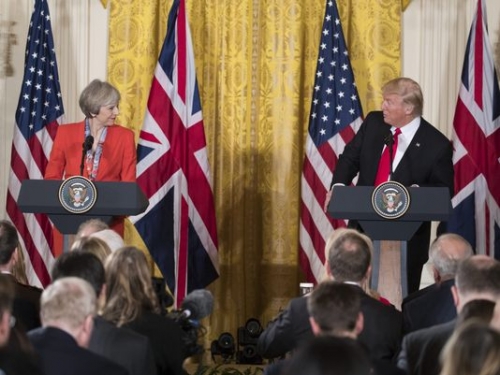
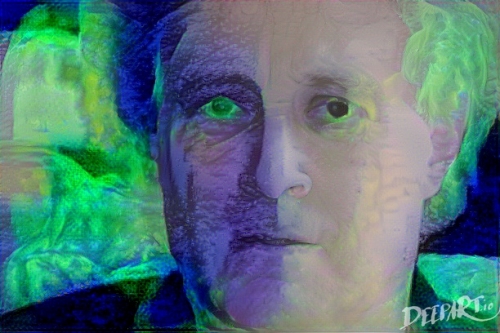
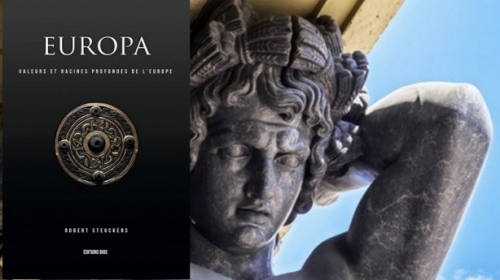
 For Africa, that means understanding the economic state of each migrant exporting country, the possible system of kleptocracy that reigns there, the ethnic components (and the conflicts and alliances that result from them), the history of each of these political or anthropological phenomena, etc. This knowledge must then be delivered by an honest press to the citizens of our countries, so that they can make judgments about credible pieces and not be forced to vote according to unremitting propaganda based on inconsistent slogans.
For Africa, that means understanding the economic state of each migrant exporting country, the possible system of kleptocracy that reigns there, the ethnic components (and the conflicts and alliances that result from them), the history of each of these political or anthropological phenomena, etc. This knowledge must then be delivered by an honest press to the citizens of our countries, so that they can make judgments about credible pieces and not be forced to vote according to unremitting propaganda based on inconsistent slogans.
 What we must retain from Thiriart is the idea of a cadre school formed on principles derived from pure political philosophy and geopolitics. We must also retain the idea of Europe as a singular geostrategic and military space. It’s the lesson of the Second World War: Westphalia defended itself on the beaches of Normandy, Bavaria on the Côte d’Azur and along the Rhône, Berlin at Kursk. Engines allowed for the considerable narrowing of the strategic space just as they allowed for the Blitzkrieg of 1940: with horse-drawn carts, no army could take Paris from Lorraine or Brabant. The failures of Philip II after the battle of Saint-Quentin prove it, Götz von Berlichingen never went past Saint-Dizier, the Prussians and Austrians never went past Valmy, and the armies of the Kaiser were stopped on the Marne. One exception: the entrance of the allies into Paris after the defeat of Napoleon at Leipzig. The United States is henceforth the sole superpower, even if the development of new arms and imperial hypertrophy, that it imposed on itself through unthinking immoderation, slowly break down this colossal military power, recently defied by the new capabilities of Russian or perhaps Chinese missiles. European independence happens through a sort of vast front of refusal, through the participation of synergies outside of what Washington desires, as Armin Mohler also wanted. This refusal will slowly but surely erode the supremacist policy of the Americans and finally make the world “multipolar.” As Thiriart, but also Armin Mohler, doubtlessly wanted, and, following them, Alexander Dugin, Leonid Savin, and yours truly want, multipolarity is the objective to aim for.
What we must retain from Thiriart is the idea of a cadre school formed on principles derived from pure political philosophy and geopolitics. We must also retain the idea of Europe as a singular geostrategic and military space. It’s the lesson of the Second World War: Westphalia defended itself on the beaches of Normandy, Bavaria on the Côte d’Azur and along the Rhône, Berlin at Kursk. Engines allowed for the considerable narrowing of the strategic space just as they allowed for the Blitzkrieg of 1940: with horse-drawn carts, no army could take Paris from Lorraine or Brabant. The failures of Philip II after the battle of Saint-Quentin prove it, Götz von Berlichingen never went past Saint-Dizier, the Prussians and Austrians never went past Valmy, and the armies of the Kaiser were stopped on the Marne. One exception: the entrance of the allies into Paris after the defeat of Napoleon at Leipzig. The United States is henceforth the sole superpower, even if the development of new arms and imperial hypertrophy, that it imposed on itself through unthinking immoderation, slowly break down this colossal military power, recently defied by the new capabilities of Russian or perhaps Chinese missiles. European independence happens through a sort of vast front of refusal, through the participation of synergies outside of what Washington desires, as Armin Mohler also wanted. This refusal will slowly but surely erode the supremacist policy of the Americans and finally make the world “multipolar.” As Thiriart, but also Armin Mohler, doubtlessly wanted, and, following them, Alexander Dugin, Leonid Savin, and yours truly want, multipolarity is the objective to aim for.